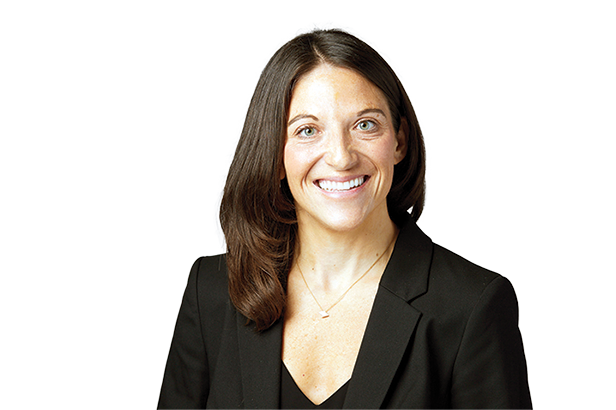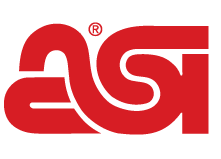Sarah Whitaker keeps a key question in mind when she contemplates what an end-user’s experience receiving a given promo item will be.
“Is this an advertisement piece or an appreciation piece?” she asks.
Whitaker, the owner of Williams Advertising (asi/360402), distinguishes the two by the loudness of the company branding on the piece – would the recipient want a left chest logo with the appearance of an employee uniform, or might they choose something a bit more subtle?
The important word there is “choose.”

What’s the Defining Trend of the Next Five Years?
“Providing that three-dimensional emotional connection to the product will become a really big deal. It’s the transition from a promotional product that ends up in a landfill to one that you just physically can’t let go of because it means something to you.” Sue Timbo, Hexa Custom (asi/60557)
More companies are turning to promo gifting campaigns that lend recipients an element of choice, whether that’s selecting between product options or taking full design control. Allowing that personalization produces a more genuine and meaningful connection between corporations and their employees, says Sue Timbo, CEO of Hexa Custom (asi/60557).
“I think it’s a huge opportunity for our industry specifically because it provides a really valuable experience,” she adds. “It’s such a value add for those corporations to show their employees something special that’s unique to them.”
In an era of strong consumer sentiment about the “stuff” people are bringing into their homes, personalization – via choice – is becoming a key tactic to ensure a promo campaign gets exactly the right products into the hands of exactly the right people. Data, as well, is arming distributors and suppliers with deeper knowledge of what will appeal to end-users.
“Personalization is really about getting people what they want when they want to see it,” says Counselor Power 50 member Lisa Hubbard, vice president of sales and marketing at Counselor Top 40 distributor The Vernon Company (asi/351700).
The Power of Choice
Historically, says Whitaker, personalization in the promo industry has involved embroidering someone’s initials under the company logo, for example. Now, she finds clients instead turning toward what she has dubbed “personalization of choice” – in other words, giving recipients the opportunity to select what product they want to receive.
How much more revenue fast-growing companies generate from personalization than slower-growing competitors.
(McKinsey)
Technology advancements over the past decade have made it easier than ever for clients to collect item preferences, sizes and employee addresses in a straightforward, organized way, says Johanna Lucia, vice president of client services at Brilliant (asi/146116).
Clients using Brilliant’s Preferred Gift platform, for example, have access to a landing page where recipients can select their preferred product during a gifting or reward campaign.
The growing popularity of company stores offers recipients the ability to choose the products they like, as do solutions like the Givee Select platform from Counselor Top 40 supplier PCNA (asi/66887), which enables distributors to handpick a curated collection of gifts that end-users can then select from and have personalized.
Williams Advertising frequently runs online pop-up shops for client gifting campaigns. Whitaker says that, often, the item most people gravitate toward is different than what she or the client would have guessed – demonstrating the importance of giving an end-user that choice.
And the comments section of those pop-up orders is typically full of gratitude and excitement for getting to have a hand in their gifting.
“It’s sentimental, almost,” says Lucia. “This company or this team really thought about me and took the time to pick out a really thoughtful gift – and I think being thoughtful is so underrated.”
A Customized Experience
When Rachel Hoskins, vice president of sales at supplier Sock101 (asi/88071), thinks of personalization, it’s the experience of building something completely unique that comes to mind.
The supplier has increasingly leaned into that idea of the experience because of the value add for the product when a consumer gets to personalize something – usually a sneaker, at one of Sock101’s event “shoe bars” – to be exactly what they would wear.
In some cases, that involves partnerships with decorators like Stahls’ (asi/88083) to allow event attendees to customize a pair of sneakers with branded patches or other decals. And with enhanced technology making one-piece minimums more accessible, it can also involve fully custom online designing, similar to shoe design platforms from retail brands like Nike or Converse.
Market Forces That Will Drive Opportunities in the Next 3-5 Years
Attendees of the ASI 2024 Power Summit were most bullish about leveraging AI, including its capabilities to improve personalization.
(ASI Research)
Hoskins herself, for example, recently produced a pair of custom sneakers through Sock 101 based on the R&B artist SZA as a gift for a friend.
“You can’t put a price on a one-of-a-kind item,” she says.
Hexa Custom’s customization system is similar. The client decides what product options they’re going to offer their end-users, and the recipients then get to design the final product themselves, selecting their colors or adding features like a front pocket to make a company-branded product their own. That can happen online or at a company event.
By definition, promotional products aren’t exactly personal, says Timbo. Yes, they’re emblazoned with the name of your company or favorite retail brand, but they’re still ordered and manufactured in bulk – for the most part, for the benefit of the corporation.
Promo is a marketing tool, Timbo says, but it has the capability to become more than that when a promotional item is created in partnership between a company and its end-users. Adding elements of personalization to a campaign creates a layer of meaning around a promo item that wouldn’t be there otherwise.
“Nothing is getting more cost effective,” Timbo says. “Nothing is getting cheaper to ship or produce, but if you can make it more meaningful, organizations will continue to allocate budget toward it because their employees will feel valued. They’ll feel part of that experience.”
Know Your Customer
Moving into the second half of the decade, “it’s not only going to be about technology – data is going to be king,” says Hubbard. “How do you get the most data to know who your customers are and what they’re interested in?”

What’s the Defining Trend of the Next Five Years?
“We’re watching the convergence of AI-driven personalization and sustainable commerce. Consumers and businesses alike are demanding hyper-personalized experiences while simultaneously holding brands accountable for their environmental and social impact. In our industry, this could mean a shift from mass production to intelligent, data-driven solutions that deliver exactly what the customer wants, when they want it, with minimal waste.” Britney Godsey, Gold Bond (asi/57653)
When it comes to information about location, for example, it can add an extra personal touch to source products local to the recipient or the client’s headquarters, offers Lucia. But data-driven personalization isn’t just about the products themselves – it also extends to the sales process.
Hubbard, for example, suggests keeping a close eye on how customers in different industries and of various demographics are engaging with the marketing emails your company sends.
Are they opening and reading them, or is something not resonating? Maybe switch up your approach. Are they continually clicking on certain types of products featured in those communications? Cater sales pitches and outreach to that product category.
At the end of the day, it’s all about truly knowing the client. Suppliers and distributors, says Hoskins, can’t be afraid to ask specific questions of their clients in order to drill down on the target recipients of a particular campaign – who they are, what they want, and perhaps most importantly, what they don’t.
That, says Hubbard, is what’s going to set companies apart in the next five years.
“Our biggest competition is the trash can,” Lucia says. “We don’t want our stuff to end up in landfills. We want people to use it, put it on their desks, walk around with it – and ideally create those brand impressions that are really special and important on the client side.”
